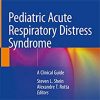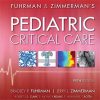Assessment of Variability in End-of-Life Care Delivery in ICUs in the United States
jamanetwork.comThis study suggests most decedents in the ICU avoid CPR at EOL, have family present at their bedside, and are closely assessed for pain. However, the delivery of EOL care varies widely among units in the United States, including the rate of pain and delirium near death.
Unit-level patterns of care delivery suggest meaningful differences in the EOL experiences of patients who die in higher-performing and lower-performing units.
To achieve the best possible care for patients who die in an ICU, future research should target unit-level variation and investigate and disseminate the successes of high-performing units.
This study identified several additional gaps in the processes of EOL care delivery.
The presence or absence of an AD was documented for only 40% of decedents in an ICU during hospitalization.
The ICU Liberation Collaborative (ILC) included data collection for 16,945 adult patients with recorded age and discharge status; 1,536 (9.1%) died during their initial ICU stay.

















